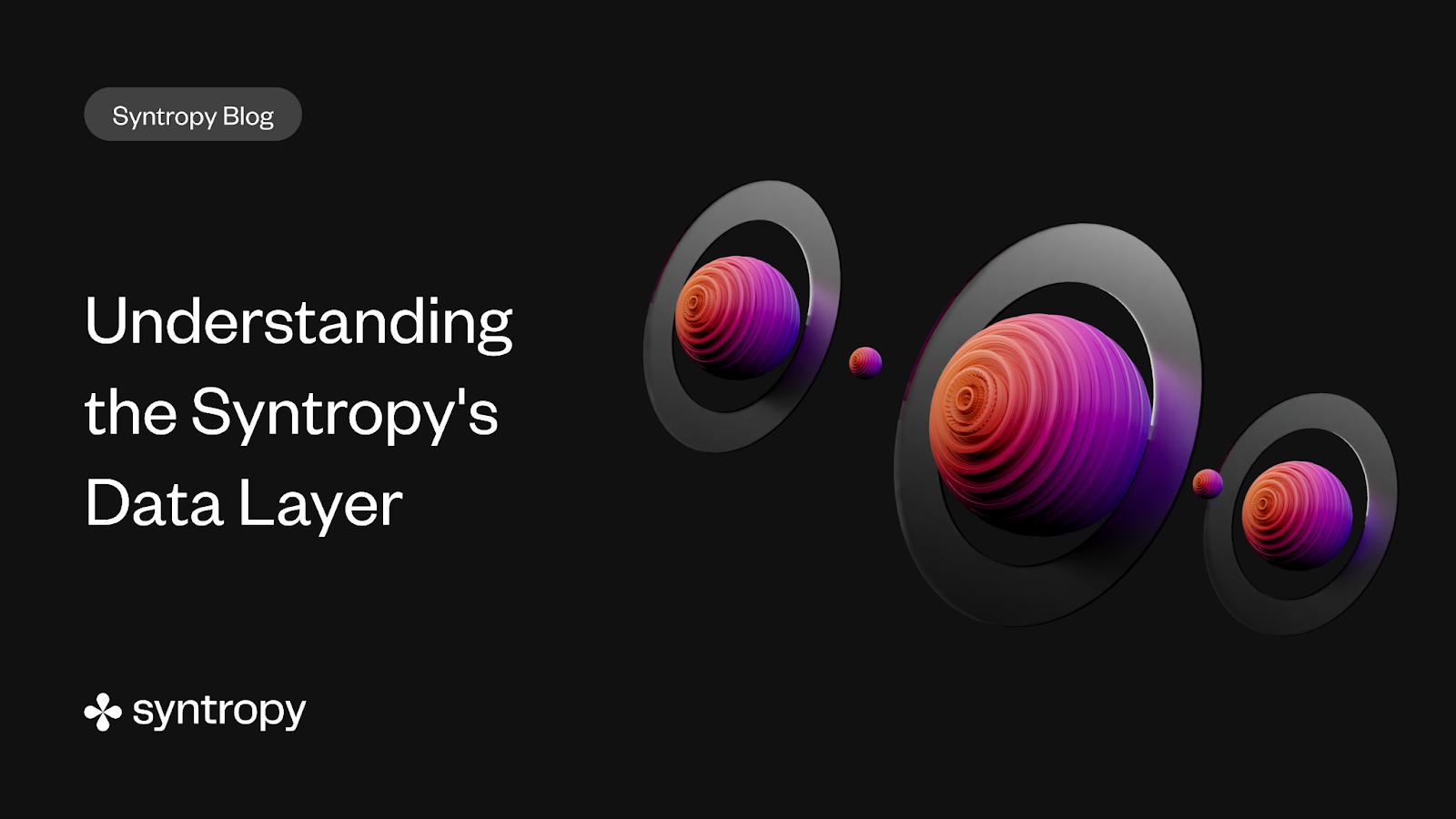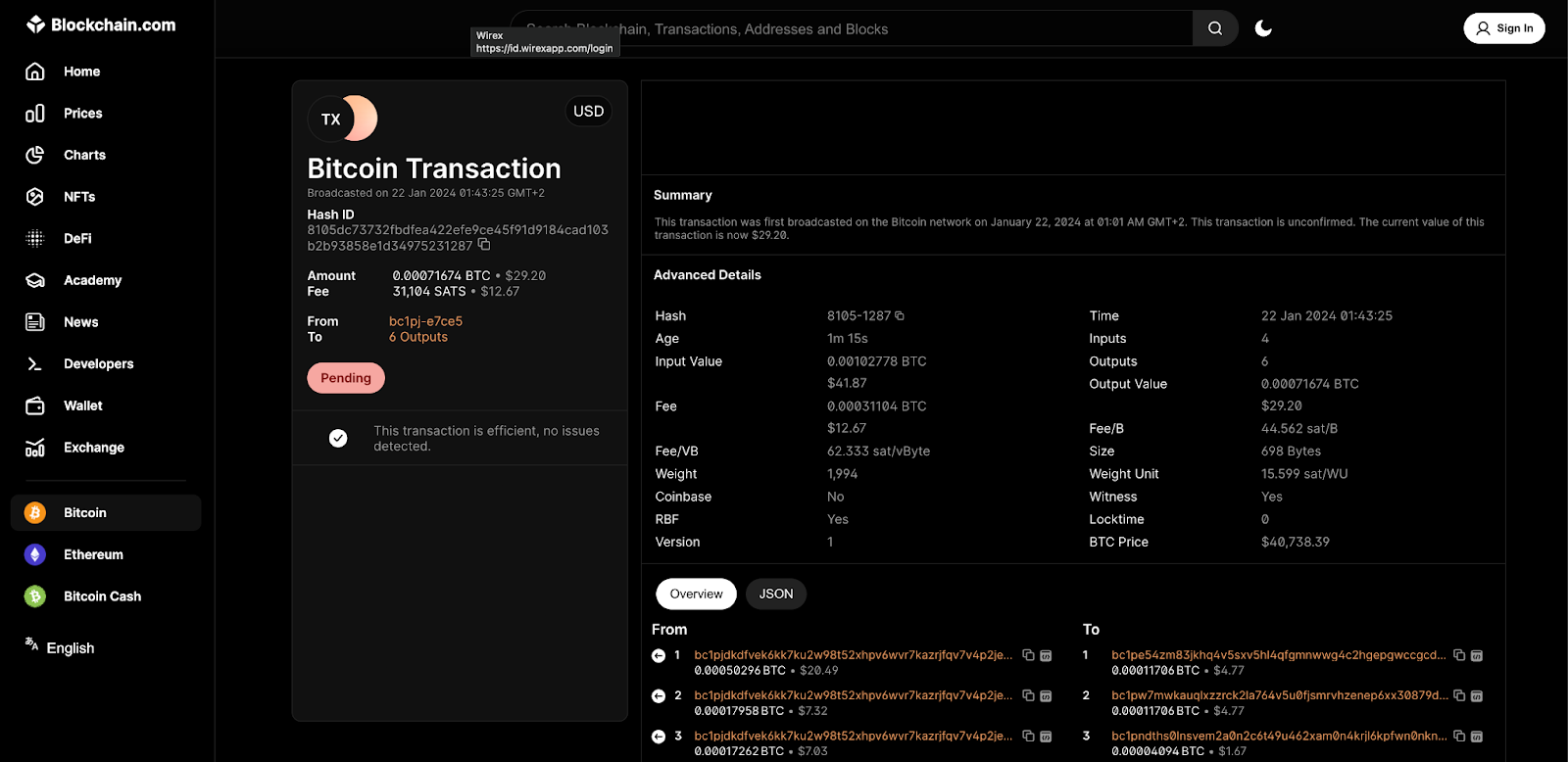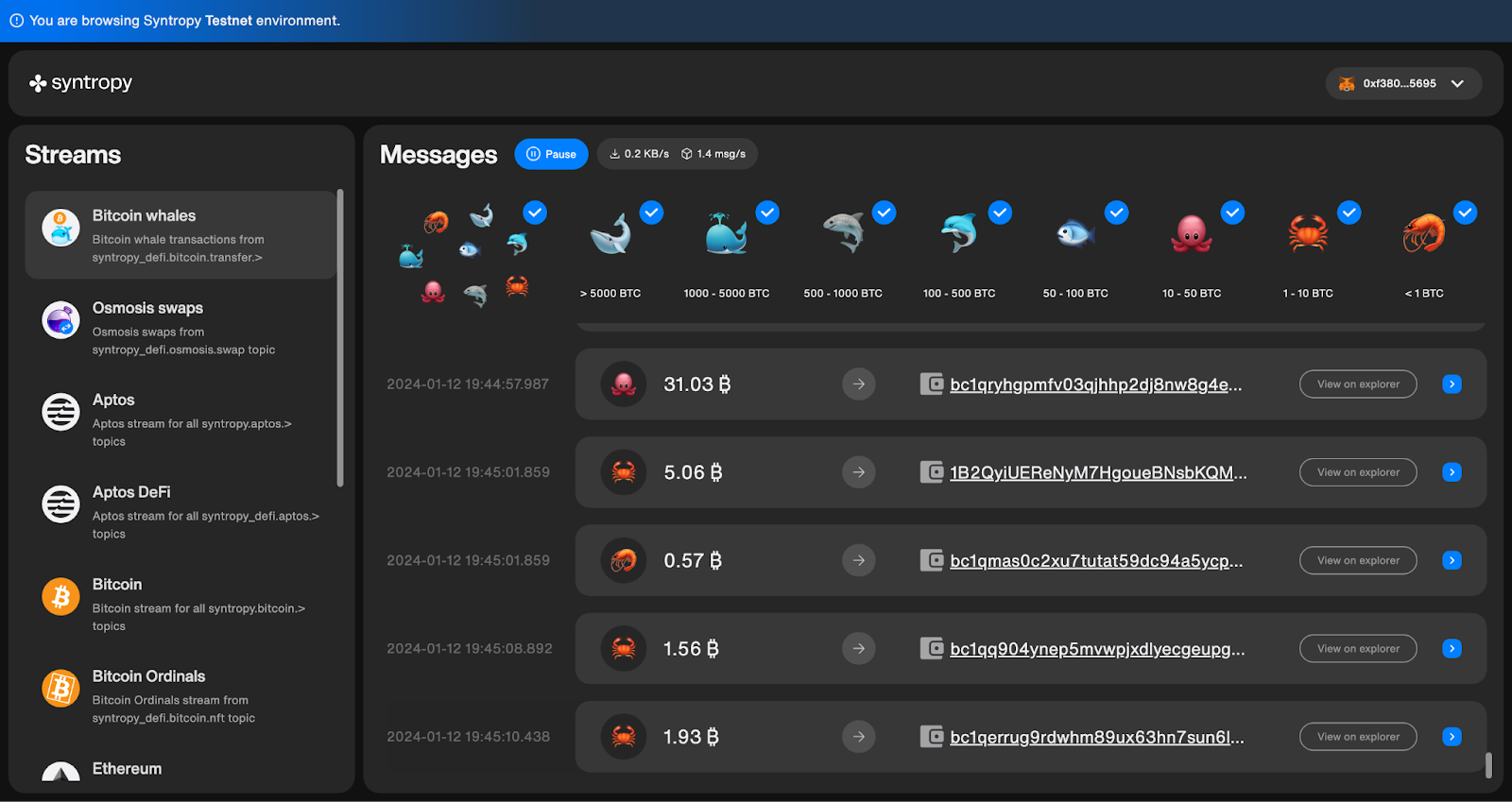Syntropy 101: The Tech Behind the Data Layer
January 23, 2024 
Data underlies everything we do in Web2. When you use Instagram, Facebook, or WhatsApp, you’re interacting with data ledgers containing messages, photos, and so on. When you use a bank, you’re interacting with a centralized ledger of credits and debits.
In the Web3 world, data is still a core building block, but with a new challenge: real-time streaming in a decentralized fashion. Syntropy is building this future of Web3 data, faster than any other solution out there.
Syntropy is revolutionizing how developers, analysts, and traders access on-chain information with our innovative technology. Our platform provides real-time data streams across blockchains, whether it’s Ethereum or Binance Smart Chain (BSC). With Syntropy, you can easily integrate blockchain data into your applications or trading strategies without having to worry about managing nodes or dealing with complex APIs.
Let’s take a deep dive into how Syntropy works and why it's a game-changer for anyone looking to harness the power of on-chain data. We'll explore the challenges of working with blockchain information today and show you how our platform makes accessing and using this valuable resource easier than ever.
What Can You Do With Syntropy & On-Chain Data?
On-chain data is the lifeblood of decentralized applications and the broader Web3 ecosystem. It's what allows smart contracts to execute autonomously, enables users to interact with dApps, and powers a wide range of DeFi protocols.
Whenever you send or receive crypto, that’s one example of on-chain data. That extends to anything you do in Web3. For example, consider a Bitcoin transaction. With every transaction, a wide range of on-chain data is automatically created. Here are some examples:
- Hash ID
- Transaction amount
- From address
- To address
- Fee
- Date/time
 Blockchain.com
Blockchain.com
Unlike off-chain data, which exists outside the blockchain and often relies on external sources, on-chain data is the core of blockchain technology. If we want to predict the price of Bitcoin, or the impact that a trade might have, then we might look at some of the following off-chain data types:
- Market sentiment
- TradFi market data (stock prices, for example)
- Financial market news headlines
- Regulatory updates
In contrast, on-chain data refers to all information that’s stored directly on the blockchain. This data is immutable. Meaning once recorded, data cannot be altered, ensuring transparency and trust in the data's integrity. But accessing valuable on-chain data can be challenging for developers, analysts, and traders alike.
Traditionally, getting on-chain data has required running your own node or relying on third-party APIs. Running a node can be time-consuming and resource-intensive, requiring you to download and sync the entire blockchain before you can start querying for information. And while third-party APIs are convenient, they often come with limitations in the types of data they provide or how frequently they update.
For example, let's say you're a developer building an application that needs real-time price feeds from various decentralized exchanges (DEXs). To get this information traditionally, you might have to run separate nodes for each DEX or rely on multiple APIs – both of which can be cumbersome and inefficient.
With Syntropy's Data Layer though, you simply subscribe to a stream, such as for DEX prices. This would give you instant access to up-to-the-second pricing information from DEXs without worrying about managing nodes or dealing with complex API integrations.
Syntropy’s Data Layer
Syntropy's Data Layer is powered by a unique combination of technologies that make it easier than ever to access and use on-chain data. At the heart of the Data Layer are real-time data streams, which provide a continuous flow of information from the world's most popular blockchains.
 Syntropy Showcase.
Syntropy Showcase.
These streams use Syntropy's proprietary technology stack, which includes everything from custom-built node infrastructure to advanced caching algorithms. This allows us to collect, process, and deliver on-chain data in near real-time. All while ensuring that it's accurate, reliable, and easy to work with.
Our platform also features a powerful query engine that lets you filter and aggregate data streams based on your specific needs. For example, if you're a trader looking for arbitrage opportunities between different DEXs, you can use our query engine to create a custom stream that only includes pricing information for the tokens you're interested in.
And because our technology stack is designed for scalability and performance, you can be confident that your custom streams will always deliver the information you need when you need it. No matter how much demand there is or how quickly the underlying blockchain is growing.
Another key feature of Syntropy's Data Layer is its support for multiple programming languages. This means that developers can write code in their language of choice, like JavaScript or Python, without having to learn new tools or libraries. The Data Layer also makes it easier for teams with diverse skill sets to collaborate on projects involving on-chain data.
Underpinning all these features is Syntropy's commitment to security and privacy. Our platform uses industry-standard encryption protocols to protect your data as it moves through our system. We also adhere to strict privacy policies that ensure your personal information remains confidential at all times.
Get Started
There’s a popular saying: two weeks in DeFi is like two years in TradFi. Every day, new millionaires are made, with some projects rocketing to the moon, while others crash to zero. Day traders can make a million dollars from almost nothing in a matter of seconds.
On-chain data is what separates the winners from the losers. Sophisticated traders use strategies like front-running. Meaning they pay higher gas fees to get in front of other transactions queued in the mempool. Front-running allows traders to prioritize their transactions, and even sell tokens back immediately at higher values.
Millions of these “maximum extractable value” transactions have been made, with the sophisticated arbitrageurs getting off with hundreds of millions of dollars in profits. For exchange owners, operators, and regular traders, the solution also lies in on-chain data. They can find out when someone is front-running transactions, as all fee data is stored on-chain. Plus, traders can find whale accounts, as it’s as simple as looking at transaction values. Using Syntropy’s Data Layer makes spotting manipulation, and the potential consequences, much easier.
Whether you’re a trader, an exchange owner, or a builder, getting started with Syntropy is easy. The Data Layer is currently in invite-only blockchain environment, so make sure to reach out to the Syntropy team on Telegram for an early access.
There's also a Data Layer showcase live, where you can browse our catalog of data streams and subscribe to the ones that interest you. Once you get an early access to the Data Layer, you can start building your own applications or trading strategies using real-time on-chain information.
Our showcase visually displays data streams, from Bitcoin Whales and Osmos swaps to Aptos transactions, and more. You can also check out our docs and SDKs to access this data programmatically.
If you're a developer looking to integrate blockchain data into your projects, we offer a range of tools and resources to help you get up and running quickly. Our platform supports multiple programming languages, so you can write code in your language of choice without learning new tools or libraries.
And because our backend tech stack is powered by real-time data streams from Syntropy's platform, you can be confident that the information provided is always accurate and up-to-date.
Resources
- https://www.syntropynet.com/post/syntropy-101
- https://t.me/SyntropyNet
- https://twitter.com/Syntropynet

















































